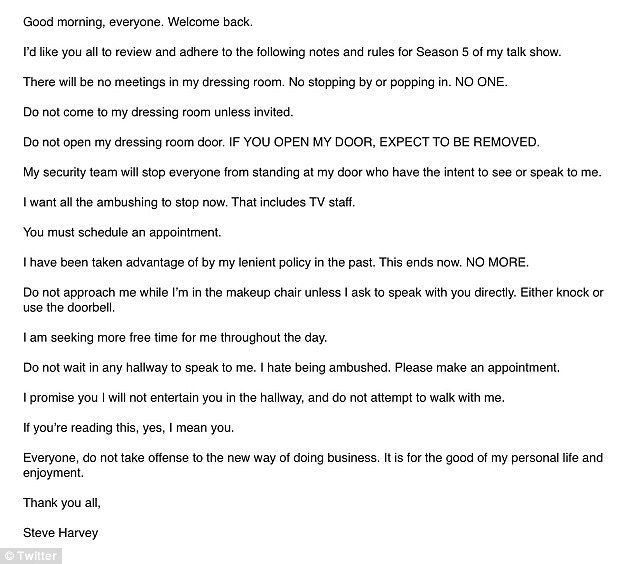
3 Questions Your Employees Don’t Ask (But Desperately Want Answered)
3 Questions Your Employees Don’t Ask (But Desperately Want Answered)
Are you the kind of person who cares what people think about you?
Last week I traveled to Wisconsin to visit a client. We’ve done business with them for a long time, but part of our agenda included discussing a new opportunity. The people we’ve historically worked with have moved on and this was the first time I’d personally met the new team. I wanted to make a good impression.
I worried about all the stuff I do when making a pitch. Was I prepared? Did my box of books and handouts make it? How will they feel about them? Are there enough copies for everyone? Should I use slides? If I do, will I be able to get my presentation up on their screen? Should I have packed a tie? Are my pants fitting too tight (unfortunately the answer there is yes). Will we start on time? Will I forget to cover all the important stuff? I had all these questions and a hundred more.
Do you ever get nervous for meetings with your boss? Or with a client or big customer? What kinds of things do you worry about when getting ready for those “high stakes” meetings?
It is not unusual to worry about how people will react to us in situations like this. In fact, what would be weird is if we didn’t worry. That’s because we are genetically hard-wired to want acceptance from others.
How to avoid being a chew toy for a saber tooth tiger
Back when our ancestors were running from wooly mammoths and saber toothed tigers, acceptance wasn’t just trying to feel good about ourselves. Getting excluded from the group was a death sentence. The worst punishment in these times was getting shunned from the tribe.
Because of this we humans developed a strong capacity for cooperation and social connection. A huge part of that capability lies in our ability to read and interpret the (primarily nonverbal) signals from others, and to adjust our behavior in a way to gain acceptance. Some argue (and I agree) that we have taken this need for acceptance way too far. But there is no question that these skills serve us well in situations where cooperation is required. Nowhere is that more true than at work.
“The psychological need that shall not be named”
Remember Voldemort in the Harry Potter stories? He was evil and ever present. Because of that there was a rule that you never mentioned him by name. This need for acceptance is a lot like that. It’s rarely discussed. In situations where the power balance isn’t equal (and often it’s not) we don’t tip our hands about our anxiety about our need for acceptance. We fear it is a sign of weakness. That’s especially true when we are in the low power position.
Why is it important for leaders to understand this ever-present but never discussed need for acceptance? Because it raises serious questions in the minds of our teammates that are never asked. Instead they make assumptions based on what we say or how we act.
Just like you want to impress and feel acceptance from your boss, your family and your friends, your employees want to impress and feel acceptance from you. They crave it. There are three questions they especially want answered, but they’ll never ask.
Three questions your employees don’t ask, but want to know:
Question One: Do you like me?
It’s so basic. But even the coolest cat in school wants to be liked. Especially by people that matter. And your boss matters. Aside from the obvious fact that your livelihood is in their hands, so is your development as a professional. And a fair amount of your sense of value as a person.
To be clear, I’m not arguing that you should live your life valuing yourself based on what others think about you. You shouldn’t. And the world would be a lot better place if we spent less time worrying about what everyone else thought about us and just concentrated on self-acceptance and being our best selves.
But that’s just not how most of us are wired. So by all means try to teach your teammates (and yourself) self-acceptance. In the meantime you can safely assume they’re not quite there. Which means that they need to know that you like them. That you think they are a good person. That you want them around.
Question Two: Do you think I have what it takes?
This one focuses on the Progress Principle. People want to make progress in their lives. It is another critical driver embedded deep in our sense of self. No one likes the feeling of running in place. Or worse, going backward. Not only do these feelings decrease engagement and increase turnover, they also create resentment. And that seeps its way into the culture of your workplace.
Here’s the key. Remember the third question of Approachable Leaders: Where are you going? Look for ways to set your teammates up for progress each day. And then support them. Encourage them. Celebrate small wins (and the big ones). Let them know you believe in them. That you think they have what it takes.
Question Three: Do you think I’m worth the effort?
Things aren’t always going to go right. We screw up. Despite our best efforts we have days when we take a few steps back. These are times even the most self-accepting person gets on shaky ground. How do you act toward your team when things are in the ditch? Do you encourage and support or do you give up on them?
And here we come back to value and self-worth. Do you think I’m worth the effort?
Think about that question for a moment and how it might effect someone. How does it effect you?
True leadership is about so much more than making sure business gets handled. Yes, that’s technically your job. And you have to make sure your job gets done. But when you step into the role of a leader, something else happens.
Your opinion begins to matter on a deeper level.
How do you let your teammates know that you like them and value them? Are there things you do that might communicate the opposite message?
PS – I’ve had these three questions sitting as a draft blog post for a few months and I forgot where I first saw them. I’ve looked high and low but can’t find the original source. If you happen to have seen these before, could you let me know? I’d like to link to them and thank them for the inspiration.


















